This season saw West Wilts BKA’s first successful queen rearing course, and today (3rd July) was the end of the second round. This morning Den and I drove around West Wiltshire like a rather unlikely pair of fairy bee-mothers, dropping off mating nucs and queen cells at deserving apiaries.
The starter and cell builder colonies were located at Den’s home apiary. Three days ago he checked how many queen cells the cell builder colony had built – there were 14 new queen cells that would need mating nucs. Time to get busy… We got together a rather motley collection of mating nucs of all types, ages, colours and makes, and populated each one with a cupful of bees. We then closed them up and left them to their own devices for 48 hours:
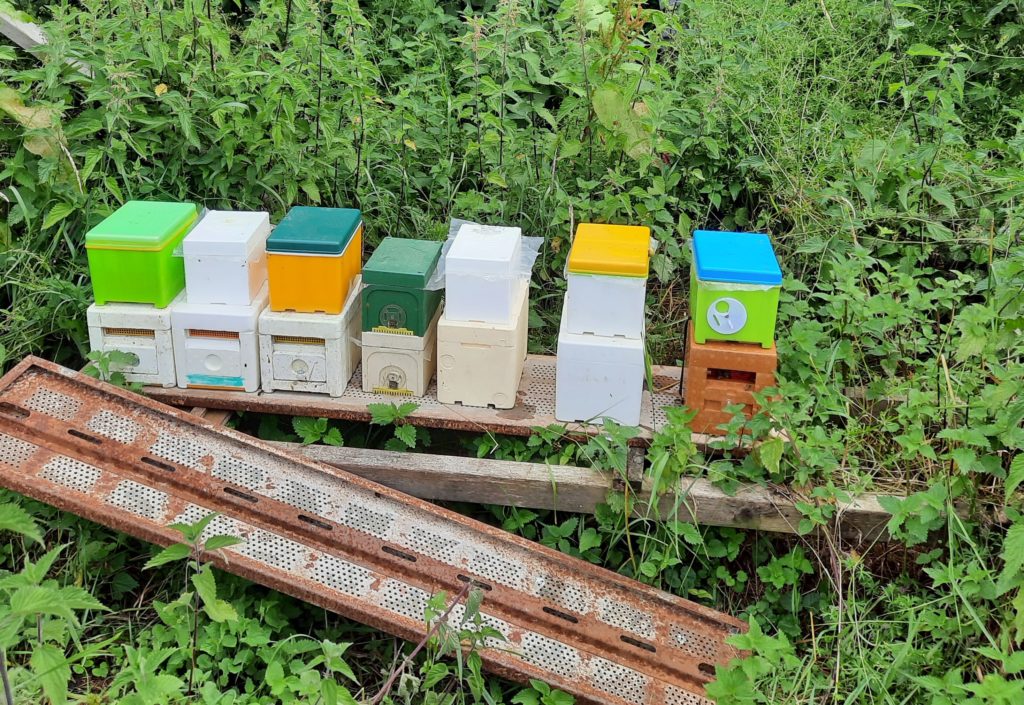
This morning we went back to Den’s apiary and took the cell bar out of the cell builder colony – these queen cells should emerge tomorrow, so it’s time to get them into mating nucs:
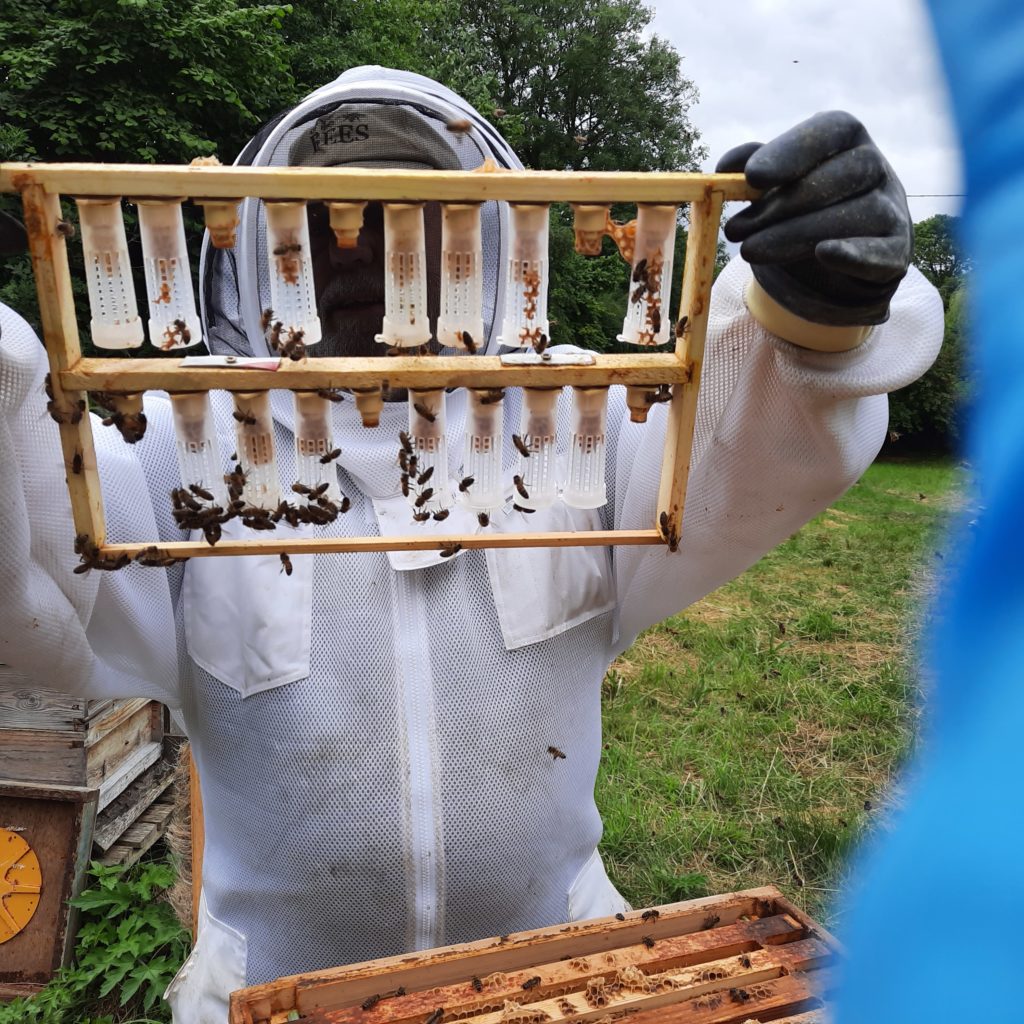
We carefully took the queen cells off the cell bar and transferred them, still in their roller cages, into a soft bed of foam ready for their journey to their new apiary sites.
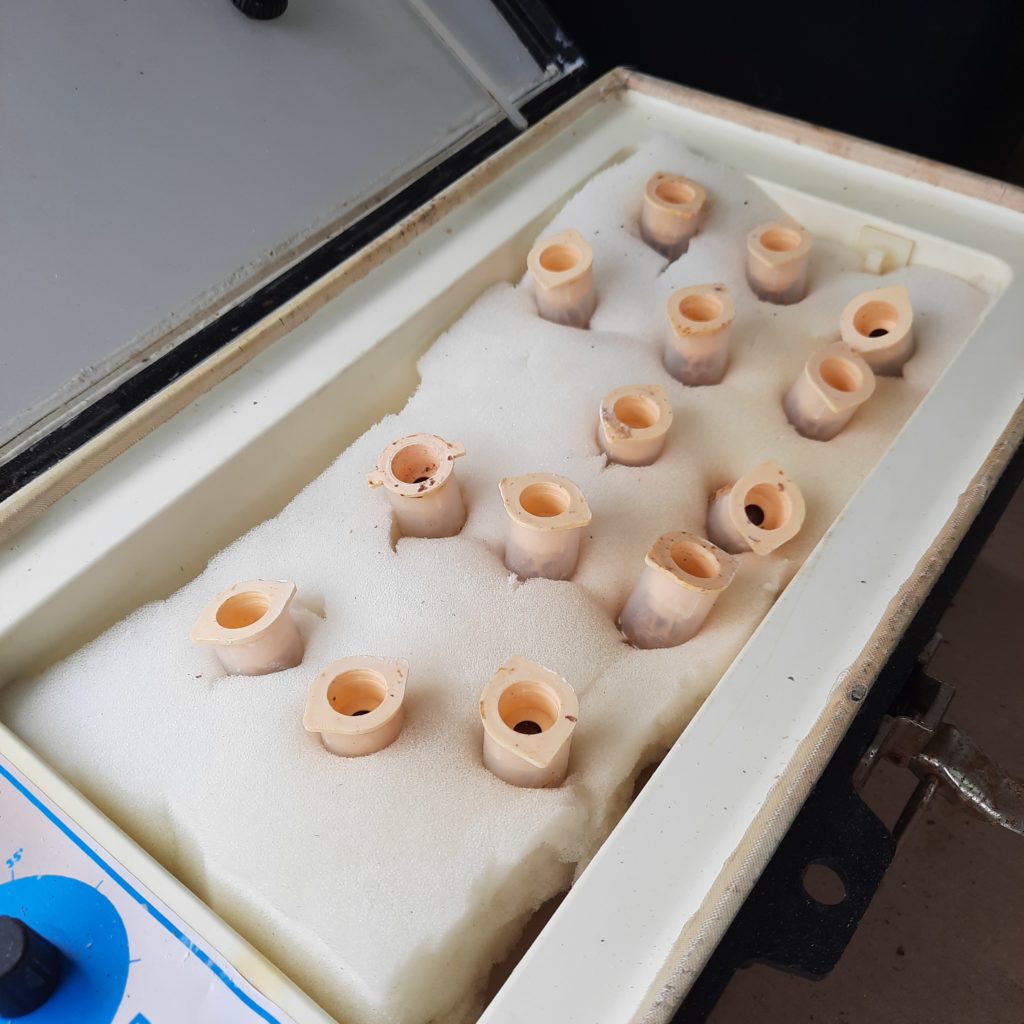
Then we piled the 14 mating nucs into the back of Den’s car. The bees had been closed up for 3 days and were quite buzzy by now!
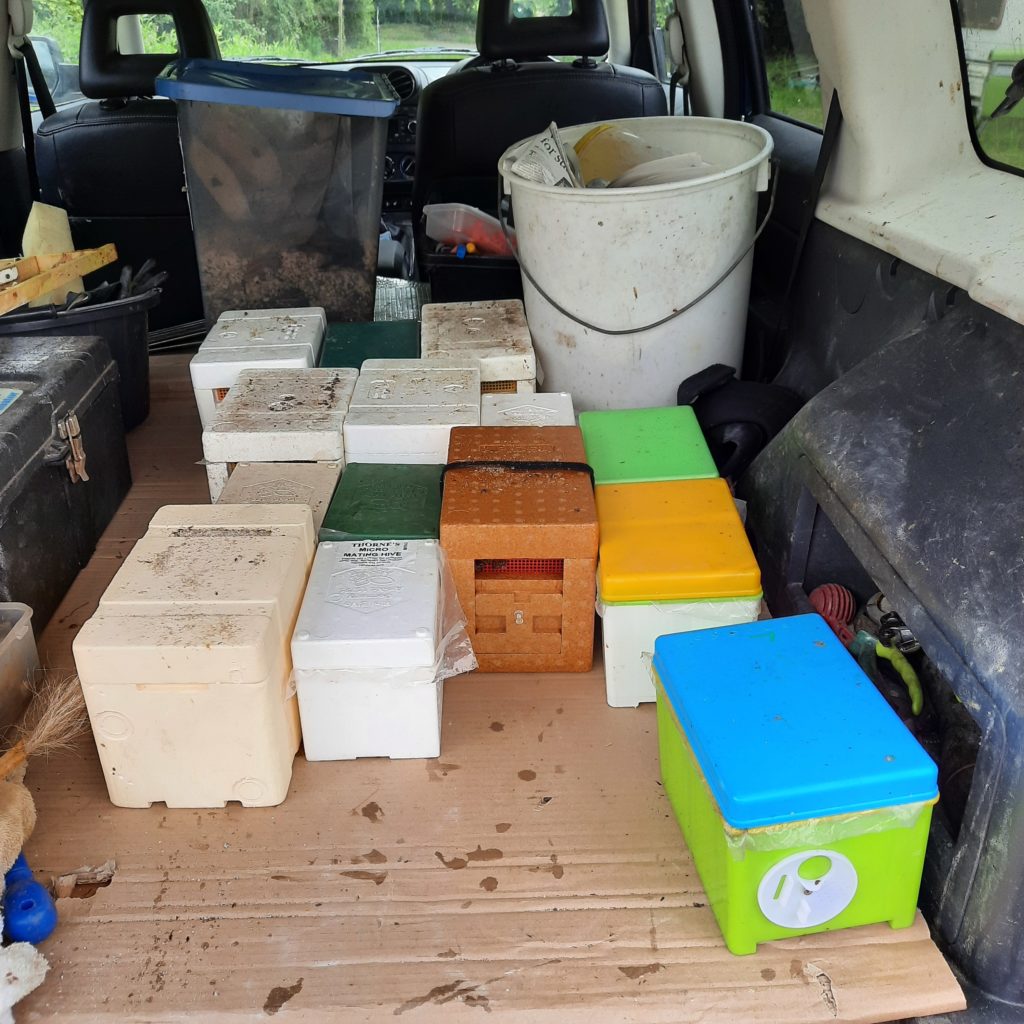
Then, with a bootful of bees and a box full of queens, we set off to do the fairy godmother act. I’ve lost count of the number of apiaries we stopped at, but one of them was the club apiary, where we left 4 nucs, and one was my own apiary, which got 2 of them. At each stop we took a queen cell from its roller cage and put it into a mating nuc. Then we opened the mating nuc up to let the bees fly. They were definitely glad to get out again after being cooped up for 3 days.
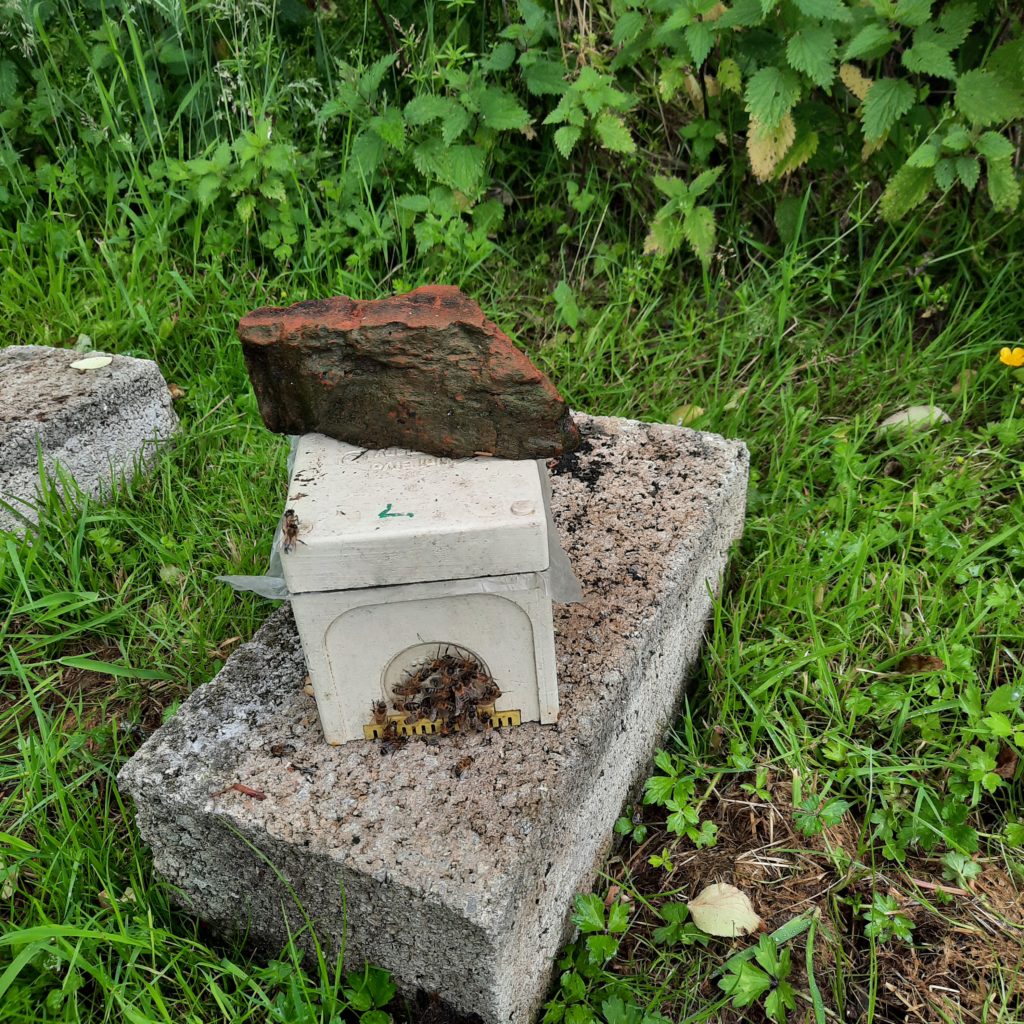
I’ve been a bit nervous about the weather, because it’s been pretty rubbish for the last couple of weeks. However, the forecast from tomorrow looks good, so hopefully the virgin queens will be able to get out on their mating flights and return to head up strong new colonies. We’ve done all we can – now it’s up to the bees…
